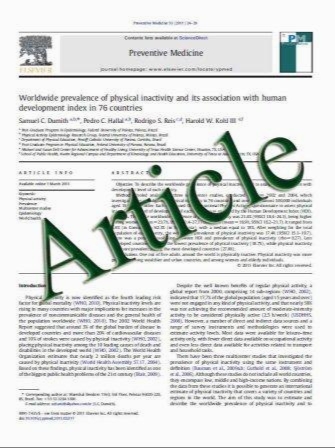Effects of metallic or translucent matrices for class II composite restorations: 4-year clinical follow-up findings
- نوع فایل : کتاب
- زبان : انگلیسی
- مؤلف : Flلvio Fernando Demarco ,Tatiana Pereira-Cenci ,Dلrvi de Almeida André ,Renata Pereira de Sousa Barbosa ,Evandro Piva ,Maximiliano Sérgio Cenci
- چاپ و سال / کشور: 2010
Description
This study evaluated the performance of composite restorations placed with two matrix and wedge systems 4 years after placement. In a split-mouth design, 23 patients were selected and received at least two class II restorations, one with metallic matrix and wooden wedge and the other with polyester matrix and reflective wedge. One dentist placed the 109 restorations, and all cavities were restored using Single Bond and P-60 (3M ESPE) according to the manufacturer’s instructions. Polymerization was performed through occlusal (metallic matrices) or through the reflective wedge (polyester matrices). Restorations were evaluated and categorized as alpha (A), bravo (B), charlie (C), and delta (D; modified United States Public Health System criteria) at baseline and 4 years after placement. Both clinical aspects and interproximal radiographs were considered in the evaluation. Data were analyzed with Mann–Whitney and Friedman tests (ل=0.05). Fifteen subjects (78 teeth/102 proximal surfaces) were reassessed after 4 years. Considering comparisons within matrices in different evaluation time points, no significant differences were observed (p>0.05). Comparing 4-year to baseline results, the quality of marginal adaptation (40% and 40.4 %, score A), marginal staining (31.3% and 28.8%, score A), and roughness (56% and 46.2%, score A) decreased for metallic and translucent matrices, respectively (p<0.05), while color match (9.6%, score A), occlusal contacts (75%, score A), and proximal contacts (71.7%, score A) also decreased in quality for translucent matrices (p<0.001). Although the matrix and wedge systems evaluated showed similar clinical performance, there was clinical quality loss after 4 years, with most of the restorations being still acceptable, and no intervention was necessary.
Clin Oral Invest (2011) 15:39–47 DOI 10.1007/s00784-009-0362-5 Received: 27 January 2009 / Accepted: 1 December 2009 / Published online: 5 January 2010


